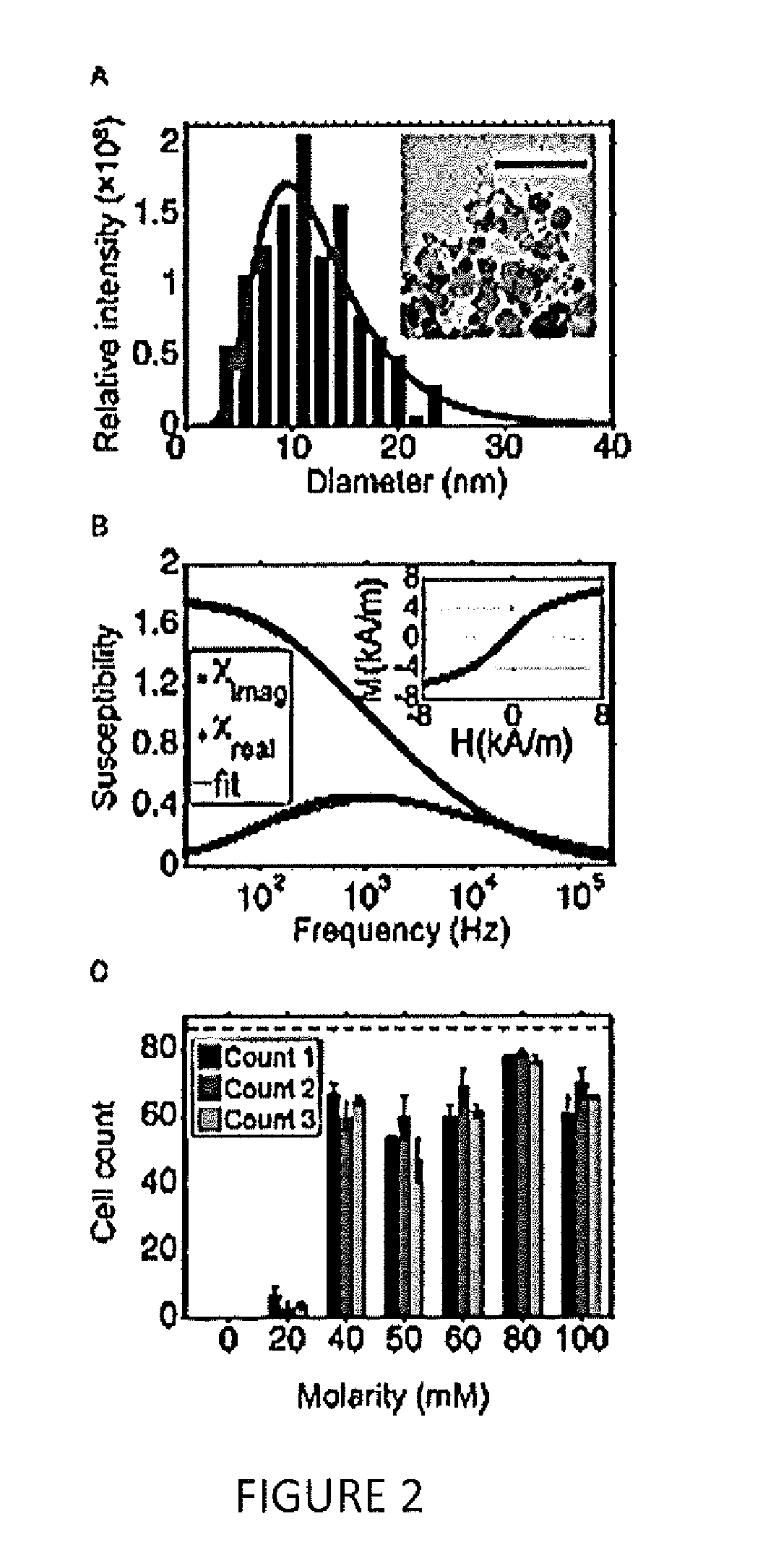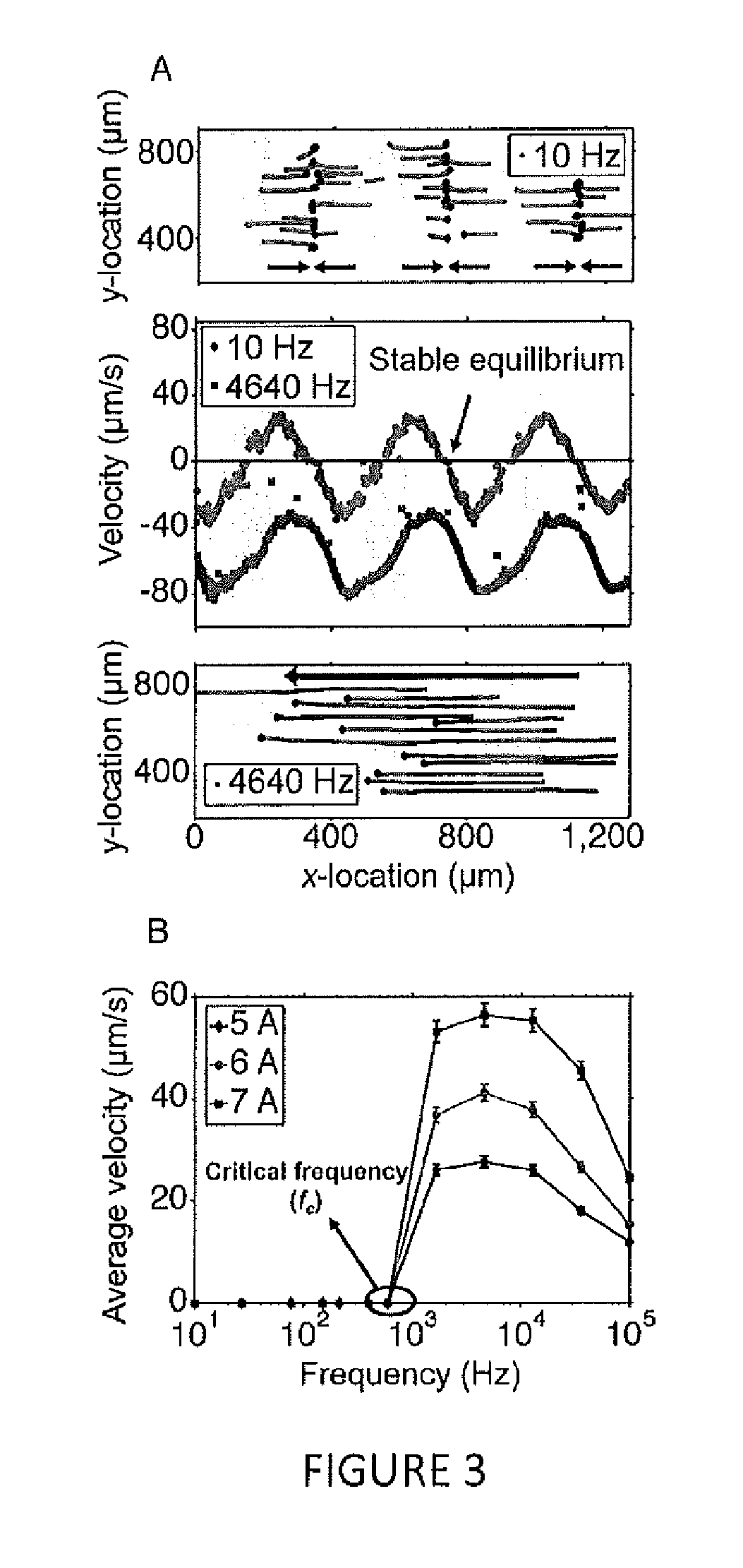Label-free cellular manipulation and sorting via biocompatible ferrofluids
- Summary
- Abstract
- Description
- Claims
- Application Information
AI Technical Summary
Benefits of technology
Problems solved by technology
Method used
Image
Examples
experimental examples
[0060]The invention is now described with reference to the following Examples. These Examples are provided for the purpose of illustration only and the invention should in no way be construed as being limited to these Examples, but rather should be construed to encompass any and all variations which become evident as a result of the teaching provided herein.
[0061]Without further description, it is believed that one of ordinary skill in the art can, using the preceding description and the following illustrative examples, make and utilize the present invention and practice the claimed methods. The following working examples therefore, specifically point out the preferred embodiments of the present invention, and are not to be construed as limiting in any way the remainder of the disclosure.
Ferrofluid Preparation
[0062]A co-precipitation method was used to synthesize cobalt-ferrite nanoparticles that were eventually incorporated into a water-based ferrofluid with a 20% solid content (K...
example 1
Ferrofluid Properties and Device Characterization
[0079]Using highly concentrated ferrofluids with live cells has traditionally proven to be a challenge, because it requires a carefully engineered colloidal system. The ferrofluid parameters that are most relevant to sustaining live cells include pH, ionic strength, and nanoparticle-surfactant combination, together with their overall and relative concentrations. Finding the right nanoparticle-surfactant combination is crucial in this regard: the ferrofluid needs to be stable at a pH of 7.4, and colloidal stability has to be maintained up to an ionic strength that can sustain live cells. One also needs to pay special attention to the size distribution of the nanoparticles within the ferrofluid. If there exist nanoparticles only a few nanometers in diameter, they could pass through the cell membrane and cause direct cytotoxicity (Scherer et al., 2005, Brazilian J Phys 45:718-727). For this reason, the present invention includes a magne...
example 2
Effects of Current Amplitute on Microparticle Speed
[0088]In additional experiments, the dependence of microparticle manipulation speed as a function of input current amplitude was determined. According to the calculations outlined in herein, and assuming the ferrofluid remains magnetically linear, the particle speed scales with the square of the input current. As illustrated in FIG. 6A, this assumption begins to break above 7 A peak-to-peak input current amplitude.
[0089]Electrode spacing was also varied (with electrode width fixed at 210 μm) to determine its effect on particle manipulation. A smaller electrode spacing resulted in faster average particle speeds and lower critical frequencies (FIG. 6B). This observation could be explained by noting that electrodes spaced closer reduce the local magnetic field gradient that produces the magnetic force on the microparticles; closer electrodes also pack more energy into the fundamental of the travelling wave that produces the magnetic t...
PUM
 Login to View More
Login to View More Abstract
Description
Claims
Application Information
 Login to View More
Login to View More - R&D
- Intellectual Property
- Life Sciences
- Materials
- Tech Scout
- Unparalleled Data Quality
- Higher Quality Content
- 60% Fewer Hallucinations
Browse by: Latest US Patents, China's latest patents, Technical Efficacy Thesaurus, Application Domain, Technology Topic, Popular Technical Reports.
© 2025 PatSnap. All rights reserved.Legal|Privacy policy|Modern Slavery Act Transparency Statement|Sitemap|About US| Contact US: help@patsnap.com



